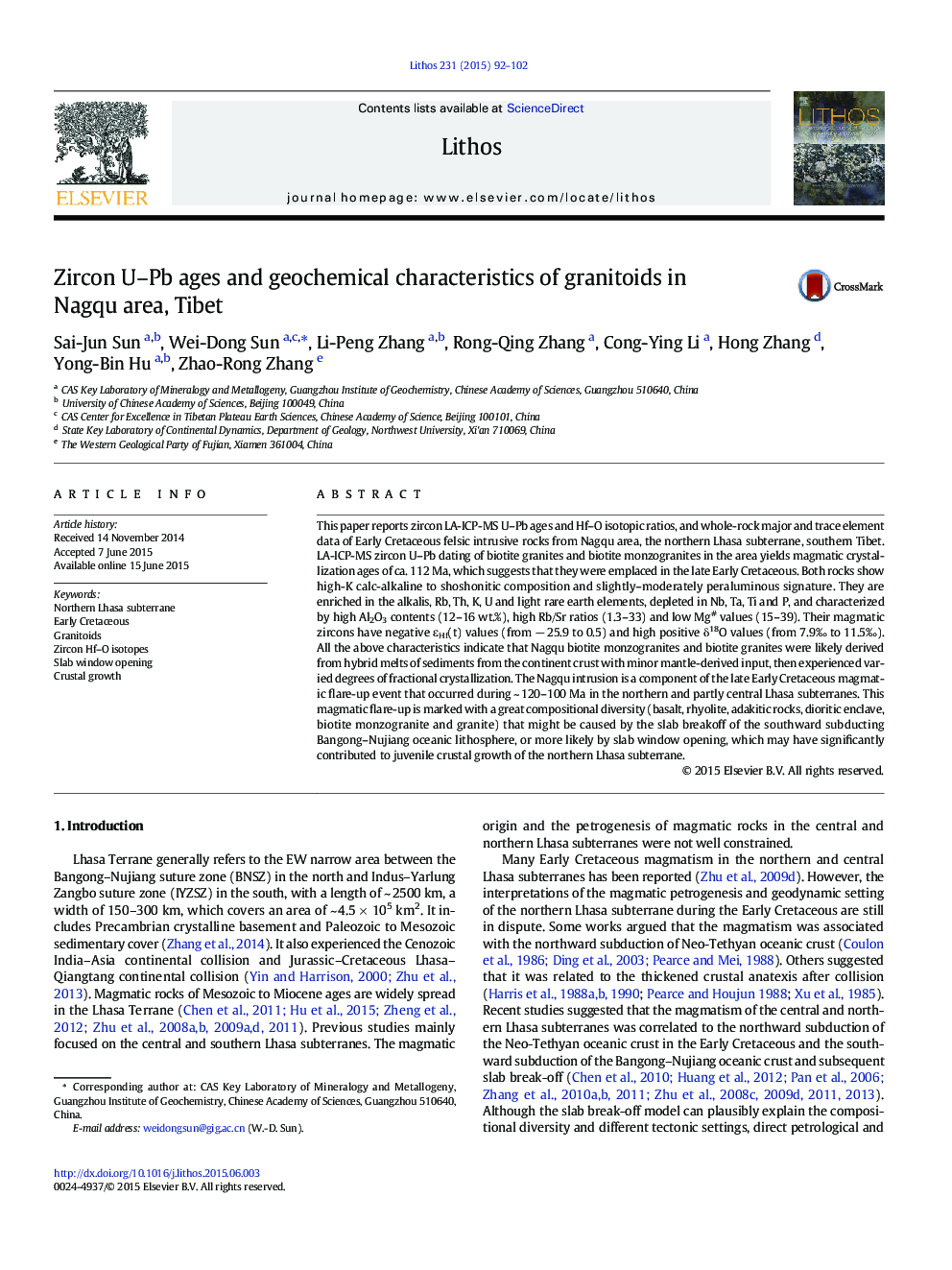| کد مقاله | کد نشریه | سال انتشار | مقاله انگلیسی | نسخه تمام متن |
|---|---|---|---|---|
| 4715637 | 1638660 | 2015 | 11 صفحه PDF | دانلود رایگان |

• Report geochemical data of Nagqu intrusive rocks for the first time
• Isotope data suggest contributions from crustal materials.
• Both crustal and mantle materials are involved in Nagqu granitic rocks.
This paper reports zircon LA-ICP-MS U–Pb ages and Hf–O isotopic ratios, and whole-rock major and trace element data of Early Cretaceous felsic intrusive rocks from Nagqu area, the northern Lhasa subterrane, southern Tibet. LA-ICP-MS zircon U–Pb dating of biotite granites and biotite monzogranites in the area yields magmatic crystallization ages of ca. 112 Ma, which suggests that they were emplaced in the late Early Cretaceous. Both rocks show high-K calc-alkaline to shoshonitic composition and slightly–moderately peraluminous signature. They are enriched in the alkalis, Rb, Th, K, U and light rare earth elements, depleted in Nb, Ta, Ti and P, and characterized by high Al2O3 contents (12–16 wt.%), high Rb/Sr ratios (1.3–33) and low Mg# values (15–39). Their magmatic zircons have negative εHf(t) values (from − 25.9 to 0.5) and high positive δ18O values (from 7.9‰ to 11.5‰). All the above characteristics indicate that Nagqu biotite monzogranites and biotite granites were likely derived from hybrid melts of sediments from the continent crust with minor mantle-derived input, then experienced varied degrees of fractional crystallization. The Nagqu intrusion is a component of the late Early Cretaceous magmatic flare-up event that occurred during ~ 120–100 Ma in the northern and partly central Lhasa subterranes. This magmatic flare-up is marked with a great compositional diversity (basalt, rhyolite, adakitic rocks, dioritic enclave, biotite monzogranite and granite) that might be caused by the slab breakoff of the southward subducting Bangong–Nujiang oceanic lithosphere, or more likely by slab window opening, which may have significantly contributed to juvenile crustal growth of the northern Lhasa subterrane.
Journal: Lithos - Volume 231, 15 August 2015, Pages 92–102